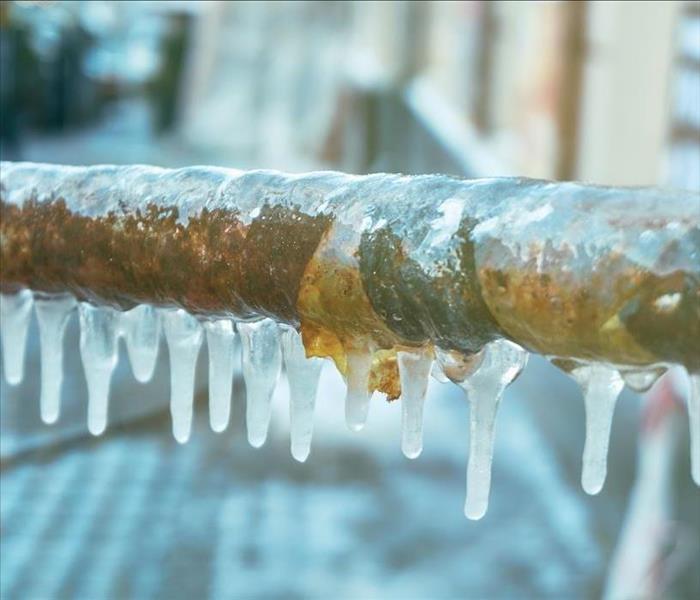Tips for Catching Water Leaks and Frozen Pipes During Winter | SERVPRO of The Saint Croix Valley
2/15/2025 (Permalink)
 Prevent costly winter damage! Inspect for leaks, prevent frozen pipes, and act quickly. Call us for expert water damage restoration when needed!
Prevent costly winter damage! Inspect for leaks, prevent frozen pipes, and act quickly. Call us for expert water damage restoration when needed!
Winter can be a beautiful season, but it also brings challenges like water leaks and frozen pipes. As temperatures drop, the risk of plumbing issues increases, potentially leading to costly repairs and extensive damage.
Recognizing early signs of leaks or frozen pipes is essential for protecting your home. Here are some tips on how to catch these problems early and what to do if you encounter them.
Signs of Water Leaks
Detecting water leaks early can save you from significant water damage and high repair costs. Start by regularly inspecting areas around your home where water is commonly used, such as kitchens, bathrooms, and laundry rooms. Look for signs like damp spots, peeling paint, or mold growth. Pay attention to your water bill as well; a sudden increase without any apparent reason could indicate a leak somewhere in your plumbing system.
Another effective way to monitor for leaks is by checking your water meter. Turn off all water fixtures in your home for a few hours and then observe the meter. If it continues to run, it’s a strong indication that there is a leak. Don’t forget to check your ceilings and walls for any signs of water stains, which can signal hidden leaks. If you notice any of these signs, it’s crucial to act quickly to prevent further damage.
Preventing and Addressing Frozen Pipes
Frozen pipes are a common issue during cold winter months, and they can lead to bursts and significant water damage. To prevent your pipes from freezing, ensure that your home is adequately heated, even in areas like basements and crawl spaces. Insulating exposed pipes, particularly those in unheated areas, can also help protect against freezing temperatures. Use pipe insulation or even towels as a temporary measure if needed.
If you suspect a pipe has frozen, act quickly. Keep the faucet open to relieve pressure as the ice begins to melt. Use a hairdryer or a heat lamp to gently warm the frozen section of the pipe, starting from the faucet end and moving back toward the frozen area. Never use an open flame, as this can cause the pipe to burst. If you’re unable to locate the frozen pipe or if it doesn’t thaw, it’s best to call a professional plumber to assess the situation and prevent damage.
What to Do If You Discover a Leak
If you find a leak, your immediate response can make a significant difference in the extent of damage. First, turn off the water supply to the affected area to prevent further leaking. This may involve shutting off the main water supply or isolating the specific section of plumbing. Next, drain the remaining water from the pipes by turning on faucets and flushing toilets.
Once you have contained the leak, document the damage by taking photos for your records and any insurance claims. If the leak has caused water damage to walls, ceilings, or floors, contact a restoration professional as soon as possible. At SERVPRO of The Saint Croix Valley, we specialize in water damage restoration and can help you assess the situation and mitigate further issues. Our team is ready to assist you in restoring your home and ensuring it remains safe and dry.
In conclusion, being proactive during winter can help you catch water leaks and frozen pipes before they escalate. Regular inspections, preventive measures, and quick action can protect your home from costly damage.
If you find yourself dealing with water-related issues this winter, don’t hesitate to reach out to SERVPRO of The Saint Croix Valley for expert assistance. Your peace of mind is our priority, and we are Here to Help® you every step of the way.






 24/7 Emergency Service
24/7 Emergency Service